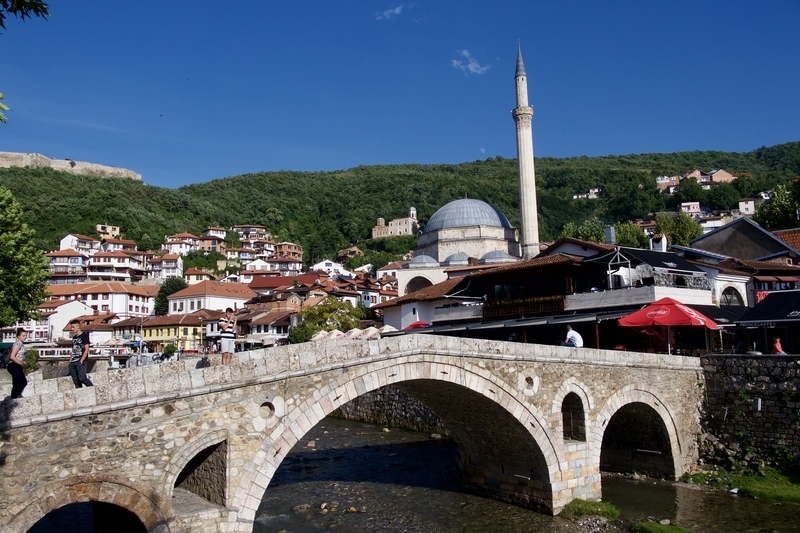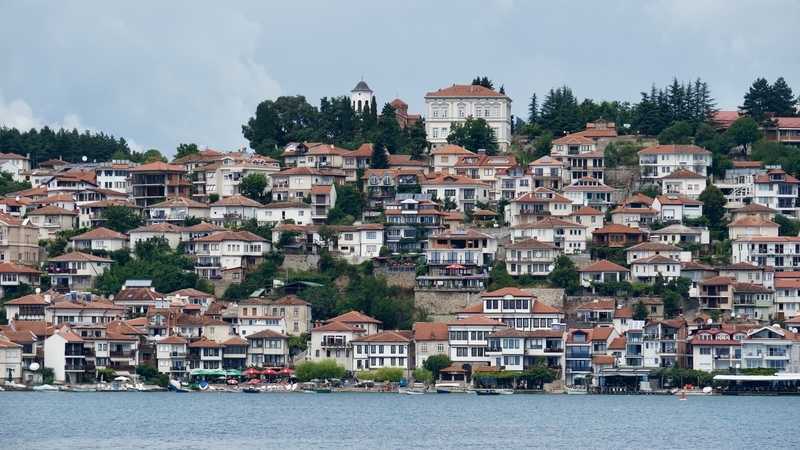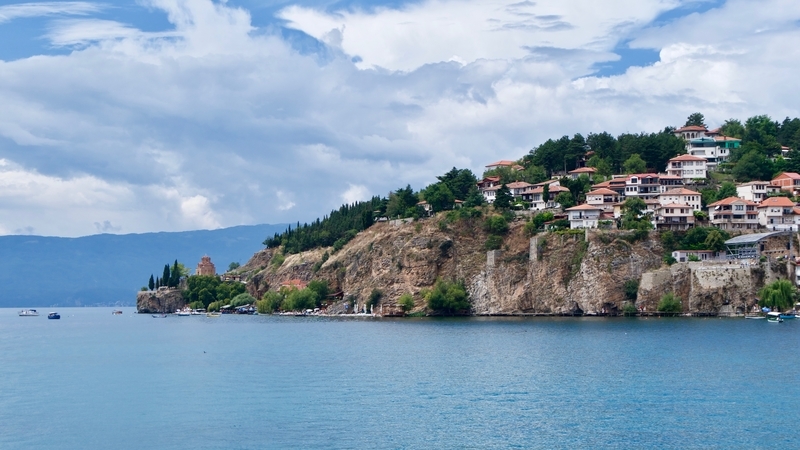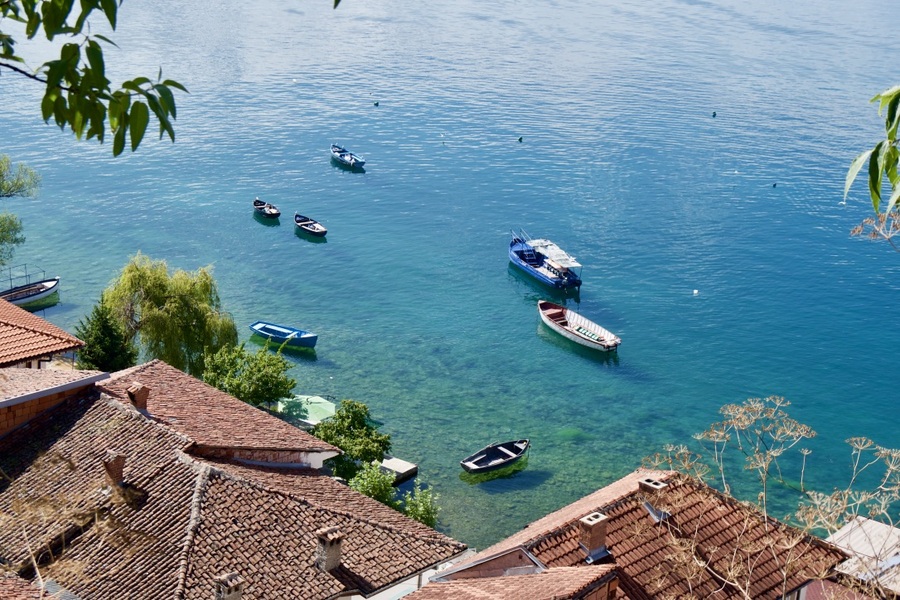
Lake Ohrid: The Pearl of North Macedonia
Ohrid is North Macedonia’s most seductive destination.
Perched atop a bluff, Ohrid’s old town is a UNESCO world heritage site–as is its nearby namesake lake. The area boasts castles and churches and postcard-perfect views at every turn. It is the kind of place that woos travelers with its arresting beauty and wealth of history.
For lovers of nature, Lake Ohrid’s crystal-clear waters are paradisiacal. For history-enthusiasts, the churches and cobblestone streets of Ohrid’s old town are a definite highlight.
THE BEST OF OHRID, NORTH MACEDONIA
Ohrid is home to a plethora of attractions, both natural and human-engineered. As one of the oldest human settlements in Europe, its historic center boasts a dazzling display of ancient relics. The town’s architecture is a jumble of early Christian basilicas and well-preserved Byzantine buildings that date back to the 9th century.
As a result, the ‘Pearl of North Macedonia’ is chock full of things to see and do—from swimming in the lake’s crystalline waters to discovering jewels of Byzantine architecture.
OHRID TOWN HIGHLIGHTS
The town of Ohrid is a true Balkan gem. Small cobbled roads cascade down the mountainside, flanked by whitewashed houses with picture-perfect balconies. Flowers are everywhere. And at every bend, views over the sapphire lake are practically begging to be photographed.
-
CHURCH OF SAINT JOHN AT KANEO
The Church of Saint John at Kaneo is a symbol of Ohrid and the area’s most famous place of worship. It is also arguably North Macedonia’s most recognizable landmark.
The church dates back to the 13th century. With its simplistic structure and splendid backdrop, it is somewhat reminiscent of Armenia’s Sevanavank Monastery.
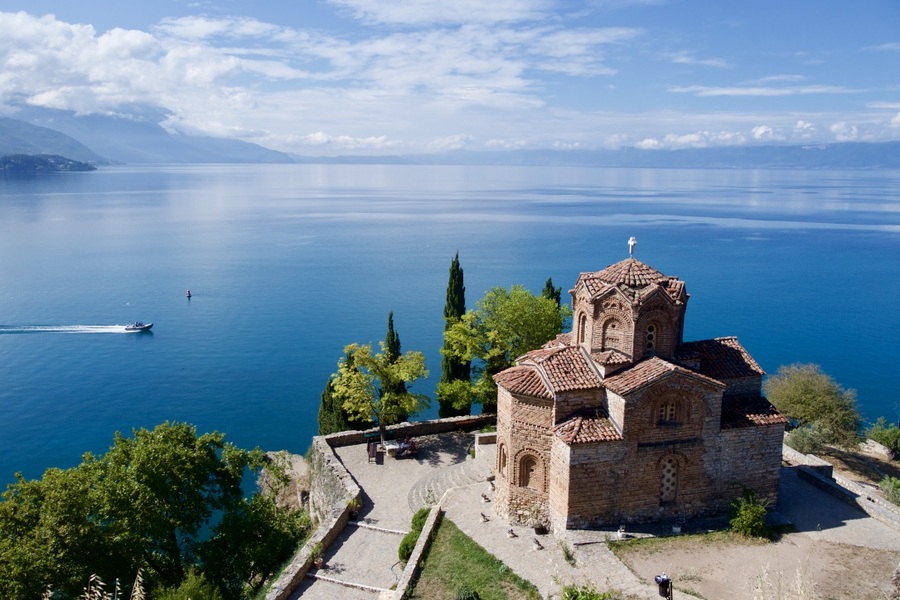
The church of Saint John at Kaneo sits at the western tip of Ohrid, near a series of woodland trails. Between the town center and the church, a paved cliffside walk winds along the edge of the lake—affording spectacular views of both the church and the shimmering lake.
-
CATHEDRAL OF SAINT SOPHIA
The 9th century Cathedral of Saint Sophia is one of the top places to visit in Ohrid. The church was dedicated to Holy Wisdom, or Hagia Sofia. It stands on the foundation of a 5th century Christian basilica.
Like the much more renowned Hagia Sofia in Istanbul, the church was converted into a mosque during Ottomans rule. In this transition, the Ottomans concealed its original frescoes under a coat of white paint.
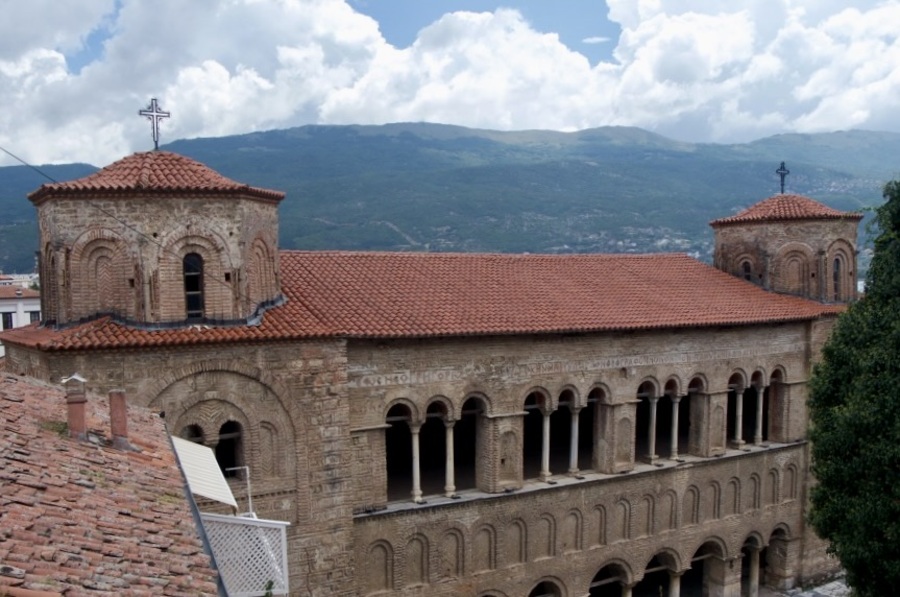
After the Balkan Wars of 1912, restorers cleaned and rejuvenated the church’s original frescoes.
The Cathedral of Saint Sophia is now, once again, a Christian place of worship.
-
CHURCH OF SAINTS CLEMENT AND PANTELEIMON
The recently-constructed church of Saints Clement and Panteleimon mirrors Ohrid’s historic church of Saint Panteleimon.
Built by Saint Clement in 863, the original Church of Saint Panteleimon was later demolished by the Ottomans.
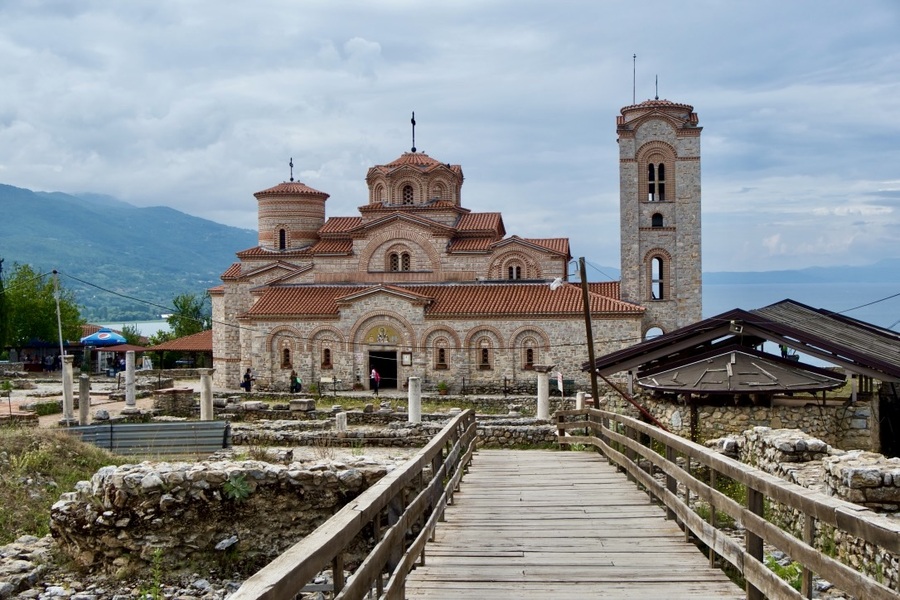
The current reconstructed church of Saints Clement and Panteleimon dates to 2002.
-
SAMUEL’S FORTRESS
Samuel’s Fortress crowns the hill above Ohrid Town, towering 100 meters above lake level.
Built at the turn of the 11th century and heavily restored in 2003, it is the perfect place from which to view Lake Ohrid’s panorama from above.
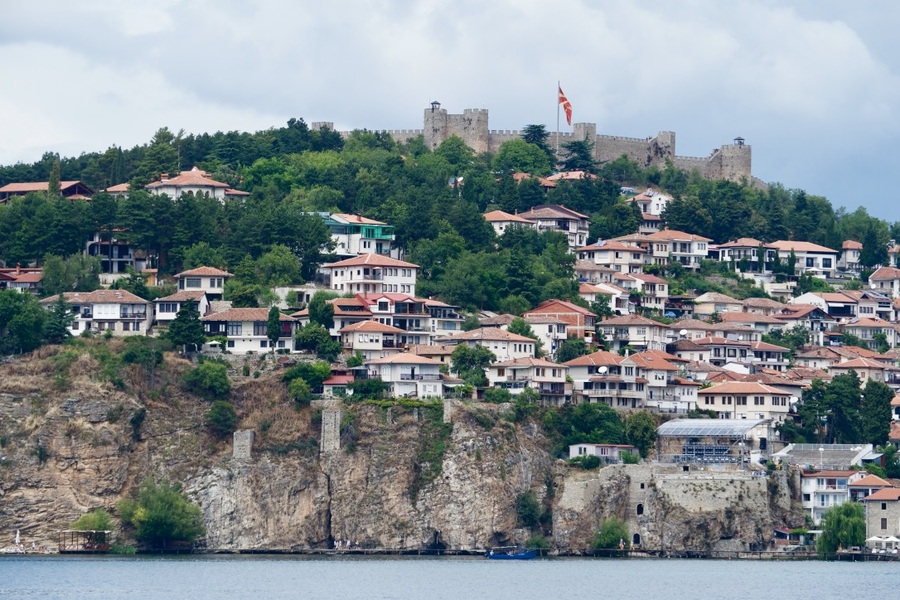
Recent excavations suggest that the fortress was constructed atop an earlier fortification built by King Phillip II of Macedon. The original ruins date back to the 4th century BC.
-
THE ANCIENT THEATER
The ancient theater of Ohrid might be small by Athenian standards, but it is nonetheless one of the most important cultural relics in the area. Ohrid’s ancient performance venue is the only Hellenistic theater in North Macedonia
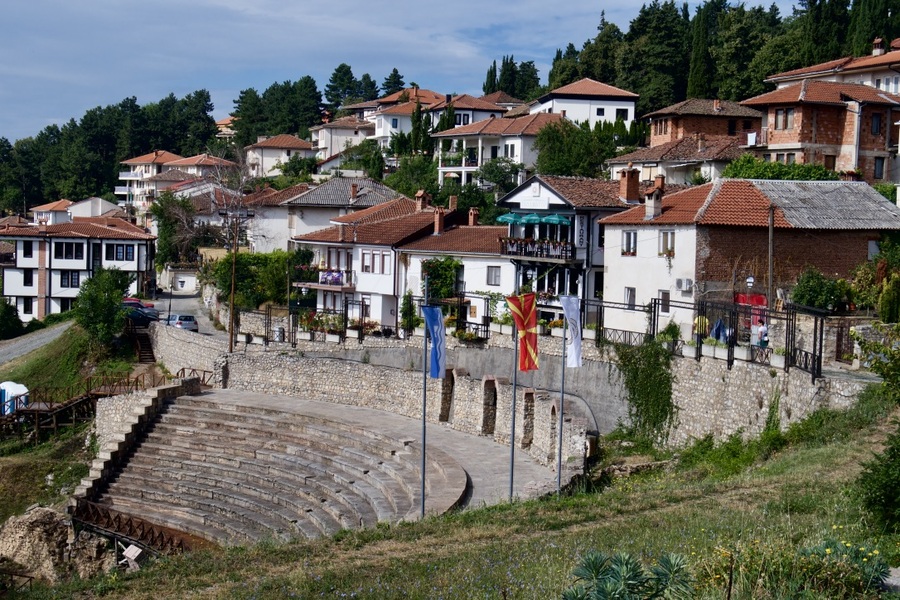
The theater dates back to 200BC. After the demise of the Roman Empire, locals abandoned the theater and buried it underground. This allowed the structure to be preserved underground until its accidental discovery in the 1980s.
-
THE PEDESTRIAN PROMENADE
From the town center, a pedestrian promenade links Ohrid’s port to its new town. The lively street is a wonderful place for an evening stroll.
As with many of the other cities I visited during my two weeks in the Balkans, Ohrid comes to life at night. Along Ohrid’s promenade, locals mingle with tourists. Push carts sell everything from homemade corn to candied nuts and ice cream.
It is a lively juxtaposition to the town’s quiet church courtyards and hidden alleyways.
BEYOND OHRID TOWN
Ohrid’s beauty extends far beyond the outskirts of town.
On the afternoon of our second day in Ohrid, we took a day trip to the Saint Naum Monastery. The excursion allowed us to visit the opposite end of the lake and allowed us to view the UNESCO site from a different vantage point.
Our boat trip included a quick stop at the Bay of Bones Museum (entrance is an additional fee) and a few hours on the premises of the Saint Naum Monastery.
En route, we enjoyed sublime views of Ohrid’s beaches and mountains.
-
LAKE OHRID BEACHES
North Macedonia may be landlocked, but an absence of seashore doesn’t mean that the country lacks beautiful beaches.
Near town, Potpesh Beach offers a small space from which to contemplate the lake’s blue-green waters. It contains a restaurant on-site.
Other beaches farther afield include Cuba Libre Beach, Lagadin Beach, Saint Naum Beach, and Trpejca Beach.
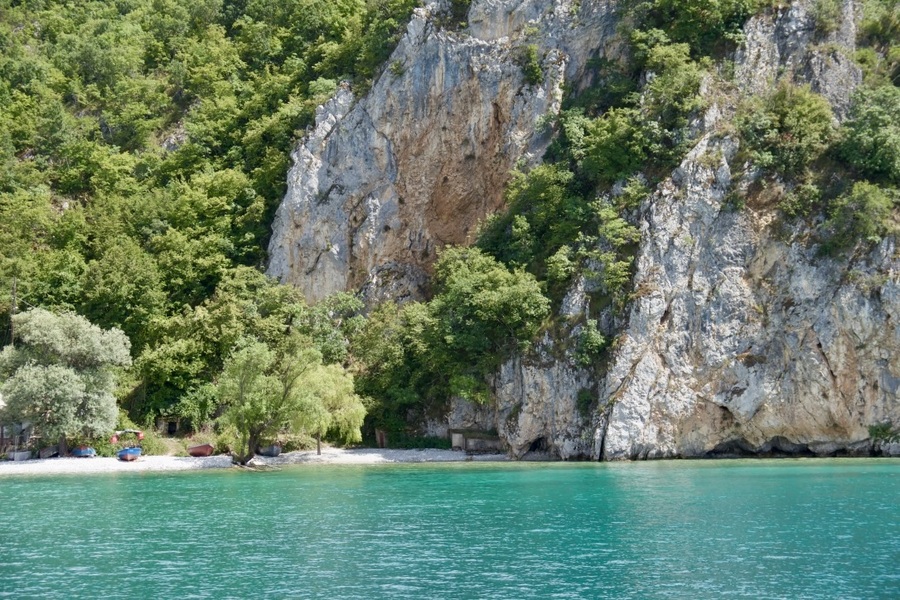
We didn’t allot any time for swimming and sunbathing during our Lake Ohrid itinerary.
But as I looked out at the beautiful shoreline during our boat trip to Saint Naum, I remember wishing we had.
-
THE BAY OF BONES
The Bay of Bones Museum, built above the water, brings light to the lives of Lake Ohrid’s prehistoric people. The museum was built in 2008 and includes 24 replicas of ancient houses.
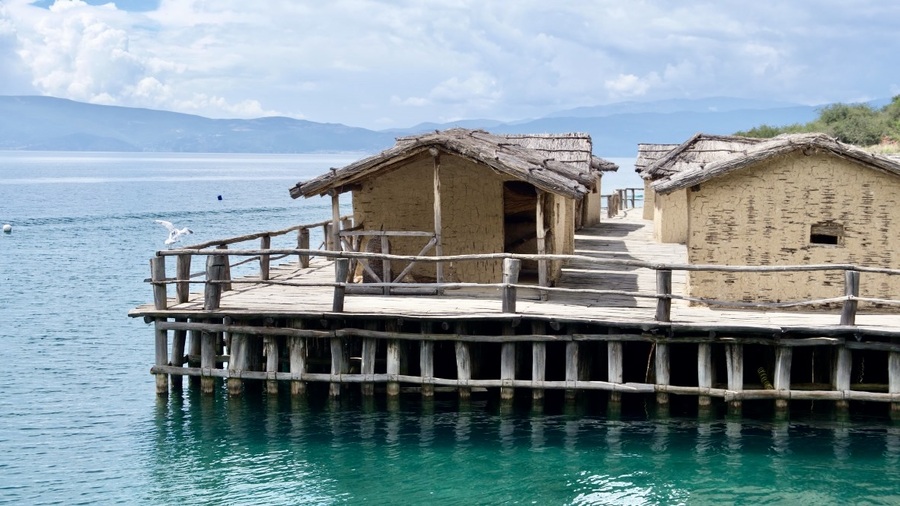
Our boat stopped at the Bay of Bones Museum en-route to Saint Naum. However, we chose not to visit during our stay in Ohrid.
-
SAINT NAUM MONASTERY
Established in the 10th century, the Eastern Orthodox monastery is the final resting place of St Naum—a venerated Bulgarian intellectual and apostle who was partially responsible for developing the Cyrillic script.
The monastery sits on expansive grounds that contain forested trails, a turquoise freshwater spring, sandy beaches and parading peacocks.
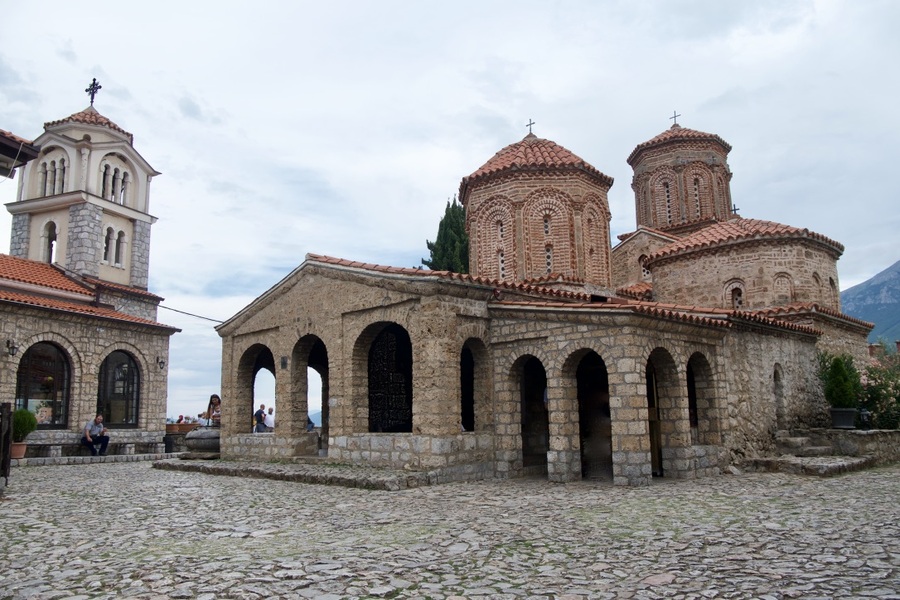
Saint Naum’s tomb lies within the church. Legend has it that you can hear Saint Naum’s heartbeat if you press your ear to his tomb.
Skeptically, I tried.
And, though I’ll fall short of claiming that I heard the heartbeat of a long-dead saint, I did, in fact, notice a faint thump-thump.
The interior of the church is covered in stunning frescoes that I was unfortunately unable to photograph.
WHERE TO STAY IN OHRID, NORTH MACEDONIA
The town of Ohrid has a wealth of reasonably-priced and highly-rated places to stay.
On the cheaper end of the spectrum, the Majap Hostel offers a place for backpackers and budget-conscious travelers to rest their heads.
Midrange options include the Bache Apartments and the exceptionally-rated Villa Varosh.
For a more luxurious place to stay, the lakeside Tino Hotel and Spa affords clean rooms, views of the water, and proximity to the town’s promenade.
WHEN TO VISIT LAKE OHRID
Though I don’t usually recommend peak season as a time to travel to Europe, Ohrid is an exception. At Lake Ohrid, the summer months boast beautiful weather, warm waters, and a lively atmosphere.
We visited Ohrid in July, aware that we were traveling to the lake during peak tourist season.
Yet, while Ohrid is one of the top places to visit in North Macedonia, it did not feel overrun. Local tourism thrives in Ohrid, as, I assume, does regional tourism. But mass tourism by Balkan standards is different from mass tourism in Western Europe.
Simply put, North Macedonia is still very much undiscovered.
Traveling to Lake Ohrid in peak season is nothing like visiting Europe’s more popular destinations during the summer.
***
I visited Ohrid with my family, as part of a road trip that included a sampling of UNESCO sites Albania and Kosovo. Our trip highlighted some of the most beautiful tourist attractions in the Balkans.
And Ohrid was no exception.
Following the spectacular-yet-strenuous hike between Valbona and Theth in the Albanian Alps, our two days in Ohrid were both relaxing and rejuvenating.
With tantalizing food, beautiful architecture and serene views over the sapphire lake, it is no wonder Ohrid has been lovingly named the ‘Pearl of North Macedonia.’

